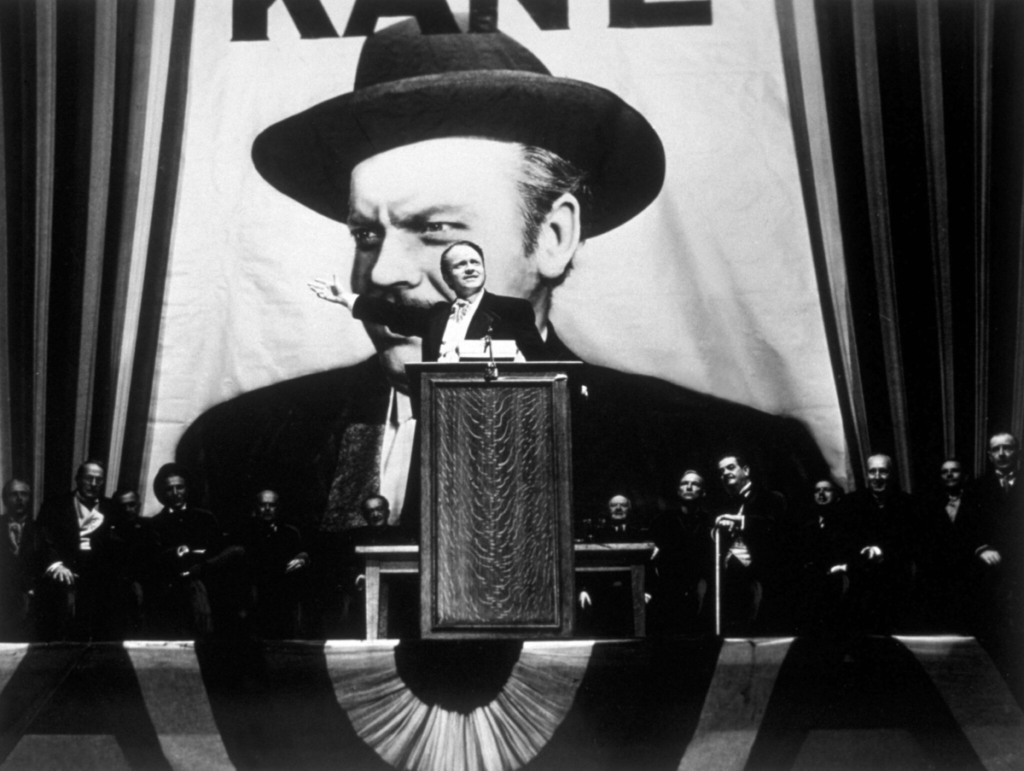Citizen Kane (1941, Orson Welles) is a pioneering film in numerous aspects. Welles utilized precise deep focus, elaborate miniatures, and innovative lighting to give audiences a fresh perspective on the big screen. In these ways, the film was influential and arguably the most important in cinema history. Some critics even claim that it’s the best film of all time. However, besides the technical aspects, the film innovated film narratives. For me, Citizen Kane’s most interesting narrative innovation is flashbacks. In this blog, I will compare the use of flashbacks in Citizen Kane and The Godfather: Part II (1974, Francis Ford Coppola). I will use Scott Meyers’, a writer for Medium, analysis of The Godfather: Part II to support my comparison of the movie’s flashbacks.

Flashbacks in Citizen Kane uncover the complicated and nuanced life of the protagonist, Charles Foster Kane. It’s incredibly innovative because the movie flipped the switch on contemporary narrative structure. Before Citizen Kane, cinema almost always employed a linear narrative, in which the plot unfolded in a straightforward order. Citizen Kane effectively deviated from this path. Furthermore, Citizen Kane shows these flashbacks through various interviews of people who had a relationship with Kane. This multi-perspective approach allows the audience to see Kane from many perspectives, dismantling the life of Kane as a child, friend, and lover. To build on that point, it remains ambiguous whether these flashbacks are accurate. As several narrators are telling the story and, as Professor Zinman stated, mental subjectivity comes to the forefront of said narration.
The Godfather: Part II takes both a similar and different approach to flashbacks in its storytelling. The flashbacks, like Citizen Kane, segment the narrative into a non-linear form. On top of that, Part II fixates on the flashbacks of one character: Vito Corleone. As Scott Meyers noted in his article, Coppola utilizes these flashbacks to show Vito Corleone’s rise to power and, as a result, how he became the person he was in the original Godfather (1972, Coppola). Part II and Citizen Kane therefore both utilize flashbacks as a tool to show character development and, ultimately, the dark reality that lay beneath the riches of the American dream.

However, the flashbacks in the two movies differ in several ways. Scott Meyers notes flashbacks are “seamless” in The Godfather II. They are presented to the viewer as facts, with no subjective narrator clouding the legitimacy of the flashback. Furthermore, Meyers notes that Part II’s flashbacks “tell two very important stories in the Corleone saga, first how it came to be and where it is headed.” Unlike Citizen Kane, Part II juggles the development of two characters within its flashbacks. It presents the flashbacks partly to juxtapose Vito’s past decisions with Michael’s decisions in the present.
Hi Luke!
I appreciate how Citizen Kane paved the way for a new form of narrative structure through flashbacks, and it accomplishes it flawlessly. This goes to show how it was truly ahead of its time. The flashbacks and unreliable narrator’s POV offer an enjoyable watch and make the protagonist more complex and nuanced, as we get to know Charles in relation to different people. Like you said, as a child, friend, and lover. I’d like to point out that the extensive prologue at the beginning of the film really spoiled the narrative for me. If you pay close attention, it establishes practically everything that happens in the film. However, now that you mention the subjectivity that comes with the use of flashbacks, the viewer can dive a little deeper into the events of Kane’s life, making inferences and playing detective as they try to find the meaning of “rosebud.” I didn’t have the best time watching it, but in retrospect, I surely can appreciate the film better after reading your post!